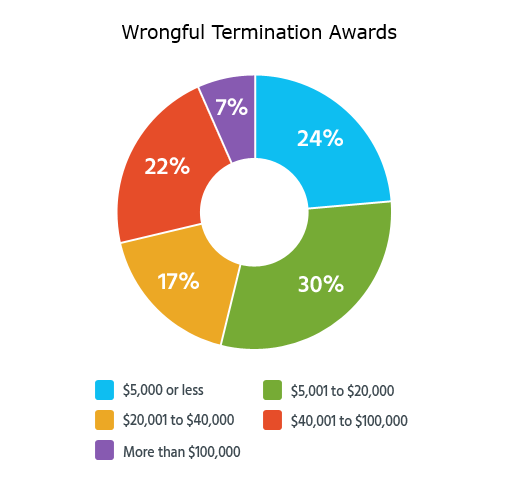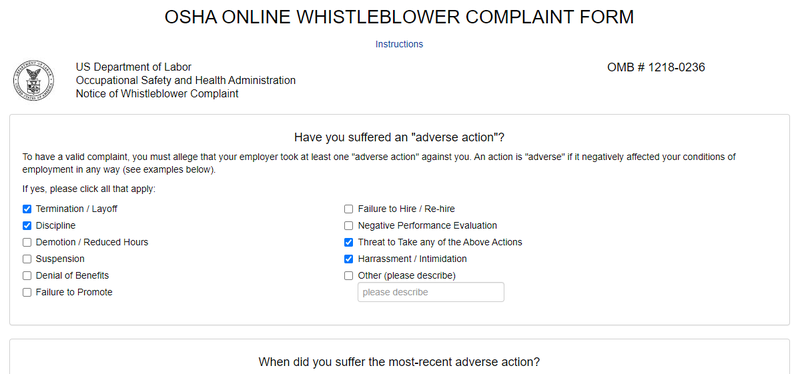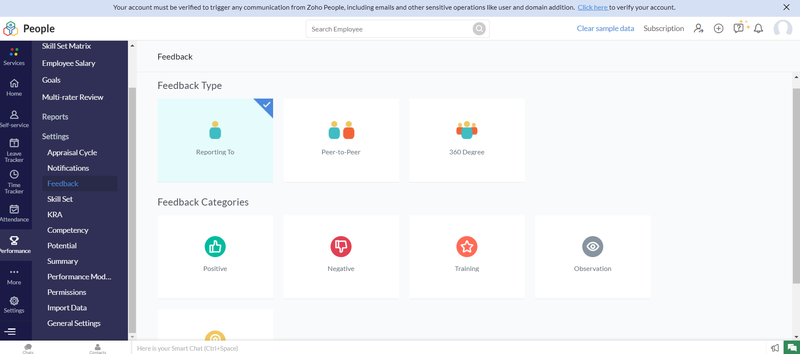12 Steps to Avoid Wrongful Termination Claims
At-will employment doesn’t necessarily mean you can fire employees at will. Know how to protect your business from wrongful termination complaints.
Most employment relationships are at-will, meaning you can fire employees at any time for any legal reason or no reason at all. Often, employers hear “at-will” and “any reason” and skip over the “legal” part. In fact, there are many illegal reasons for firing an employee, and it’s important to understand them before you let someone go.
How easy is it for a snap decision to turn into a wrongful discharge complaint? Consider the well-known case of EEOC v. Walgreens, in which a diabetic employee with an 18-year record of excellent service ate a $1.39 bag of chips because she was hypoglycemic. She tried to pay for the chips when her sugar rebounded, but her supervisor, perhaps under the influence of a particularly strident presentation on shrink prevention, fired her anyway. The firing violated the Americans With Disabilities Act (ADA), a mistake that cost the company $180,000.
Given Walgreens’ net profit margin, the company would have to sell about 5 million bags of chips to make up for the one the employee ate. And that’s before you factor in all the hidden costs of losing a good retail employee.
Wrongful termination is an expensive and preventable mistake. This article walks you through four illegal reasons for firing employees and a dozen simple steps you can take to avoid unlawful terminations.
Overview: What is wrongful termination?
Wrongful termination is firing an employee for an illegal reason. A reason may be illegal because it violates:
- Terms of a legal contract such as an employment agreement
- Terms of an implied contract
- Federal or state laws protecting employee rights
- Public policies protecting society’s interests
Let’s take a look at examples of each type of illegal discharge and how they play out in the workplace.
In a Nolo survey of employees with wrongful termination claims, 46% reported awards of more than $20,000. Image source: Author
4 types of wrongful termination
Anything that drives up employee turnover is costly, but unjust terminations expose your company to a whole new level of financial damage. By avoiding these four major types of violations, you can avoid charges that an employee was wrongfully terminated.
1. Contract violations
Terminations must comply with any terms set forth in your written contracts with employees. For example, companies sometimes offer employment for a specific term.
If you hire a salesperson on a five-year contract tied to specific sales goals, you are legally bound to retain the employee for the term of the agreement as long as the goals are met. Even if you have compelling financial reasons for terminating the employee before the five years are up, you cannot legally do so.
Another example is a contract offering employment subject to termination for “just cause.” This essentially creates a perpetual employment agreement that can be broken only due to poor performance or violation of company policy.
All contracts require the parties to act in good faith. Terminations that demonstrate bad faith or malice may therefore be considered a breach of contract.
2. Breaches of implied contracts
Some states recognize implied contracts — promises that can carry the legal weight of a contract — as an exception to at-will employment. An implied contract can be created by company policies, employee handbooks, verbal assurances, and other company statements.
For example, say your attendance policy prescribes progressive discipline for unexcused absences. Employees receive a verbal warning for the first absence, a written warning for the second, and termination for the third. You have an employee with a poor attitude who’s a no-show, and you decide to let the person go. The employee could claim illegal termination based on the argument that your disciplinary policy guarantees three strikes before they’re out.
Verbal assurances of long-term employment can also create implied contracts. For example, telling an employee, “You have a job here as long as you need,” or, “If you continue to perform like this, you’ll be running the department next year,” could imply a promise to continue employment.
3. Federal and state employment law violations
Many laws that protect employee rights include provisions against being wrongfully fired. You cannot fire employees in retaliation for filing complaints, participating in investigations, or otherwise exercising their rights under these laws, which include:
- The Fair Labor Standards Act (FLSA): You cannot fire an employee for demanding proper or timely pay or raising other wage and hour concerns.
- The National Labor Relations Act (NLRA): Employees have a right to participate in union activities and to discuss workplace conditions more broadly on and off the clock. These protections extend to comments about your company made on social media, so tread lightly when responding to employee speech.
- Title VII of the Civil Rights Act (Title VII) and ADA: Employees have a right to a workplace free of discrimination and harassment based on disability, gender, race, national origin, religion, age, and other protected categories. You can’t fire an employee for raising concerns, lodging formal complaints, or otherwise exercising those rights.
- The Equal Pay Act (EPA): You can’t fire someone for demanding equal pay for equivalent work or complaining about pay discrimination.
- The Family and Medical Leave Act (FMLA), Pregnancy Discrimination Act, and Uniformed Services Employment and Reemployment Rights Act (USERRA): Employees are entitled to protected leave for certain conditions and events. You can’t fire employees for requesting or taking leave they’re legally entitled to.
- Occupational Safety and Health Act (OSHA): Employees can’t be fired for raising concerns or filing complaints about unsafe working conditions. They also can’t be fired for using workers’ compensation benefits or injury-related leave.
- State employment laws: States have many laws providing similar protections that you must consider before terminating an employee.
4. Conflicts with public policy
In addition to worker protections, the government enforces policies that protect society and fundamental human rights. These include broad protection from discrimination and also protect employees from being pressured into performing illegal or unethical acts or being punished for reporting them.
An example is the Whistleblower Protection Act, which protects federal employees from termination for disclosing federal waste or fraud. Private-sector employees also have whistleblower protections under laws administered by the U.S. Occupational Safety and Health Administration (OSHA).
Filing a whistleblower complaint is as easy as clicking the boxes on OSHA’s online complaint form. Image source: Author
What to do when former employees claim wrongful termination
If an employee files a wrongful termination lawsuit against your company, these steps will help you control the damages.
Review the formal complaint
The first thing you should do is read the formal complaint to determine the legal basis for the charges. If the terminated employee contacts you, refer them to your attorney. Direct other employees contacted by the terminated employee to refer the person to HR. Once formal charges are filed, it is best to communicate exclusively through your attorney.
Investigate fully
Based on the contents of the complaint, investigate thoroughly and document your findings. Turn these over to your legal counsel.
Respond through your attorney
Your attorney can advise you regarding the best response to the charges. If the firing was illegal, your attorney may recommend offering a settlement.
12 ways to prevent wrongful termination claims
Based on all of these legal pitfalls, here are 12 strategies to prevent claims of unjust termination.
1. Draft contracts carefully
Keep your doors open when drafting employment contracts and HR policies. Make sure you preserve your ability to lay off, furlough, or terminate employees at any time and for any legal reason. Keep signed copies of your employment contracts and policies in secure employee files.
2. Follow the terms
If you decide to limit your ability to fire at will, make sure to observe the terms of your agreements carefully. You can’t change the terms of an agreement unilaterally, even if you have a compelling reason to do so. This includes agreements with contractors and common-law employees.
3. Avoid implied contracts
Train managers to avoid making statements that might be construed as promises of continued employment. It’s tempting to reassure employees their jobs are secure and let them know you’d like to keep them around long into the future, but you need to preserve your options should conditions require a change in your workforce plans.
4. Discipline and document carefully
How you discipline has a huge impact on your exposure to wrongful termination claims. As the Walgreens case illustrates, a zero-tolerance policy doesn’t always pay. Disciplinary policies and enforcement need to be applied consistently and fairly, but they should have room built in for compassion and common sense.
You also need to avoid the appearance of favoritism. That’s never an easy line to walk, but it’s key to protecting your company.
Keeping accurate and thorough disciplinary records is equally critical. It’s common for employees who are terminated to point to positive performance reviews as evidence that the official reason for their termination is a pretext for a hidden, illegal motive.
A recent example is King v. U.S. Bank, in which a senior vice president argued that his firing over discrimination complaints was really a pretext to avoid paying his annual bonus. The wrongful termination award alone topped $2.4 million.
Offering shifting reasons for a termination can also be a red flag in court. Identify the reasons for your decision, present them at termination, and stick to them.
Your front-line managers and supervisors are key to protecting your company with consistent discipline and thorough, accurate documentation. This may require taking time to build a case before terminating someone.
HR software such as Zoho People can help you manage performance and discipline consistently and efficiently.
HR software makes it easy to provide consistent feedback and document performance. Image source: Author
5. Act in good faith
Contracts impose a legal duty on both parties to deal with one another fairly, honestly, and in good faith. The King v. U.S. Bank case cited above is a good example of bad faith dealing since the bank allegedly tried to avoid paying compensation owed under the employee’s contract.
6. Ban discrimination and harassment
Discrimination and sexual harassment complaints often go hand in hand with wrongful termination charges. By preventing the root causes, you can reduce your exposure to complaints of illegal termination.
7. Prohibit retaliation
It’s against the law to take any adverse action against an employee who raises discrimination, harassment, or other legitimate workplace complaints. Even if you think the complaint is unfounded, you need to make it clear that you won’t tolerate retaliation against employees for complaining or participating in ensuing investigations.
Adverse actions include not just firing employees but demoting them or even giving them the cold shoulder. Employees who are treated badly because of a complaint may become so demoralized that they quit. This is called “constructive discharge,” and it’s treated just like a termination under the law.
8. Provide leave as required
Another common cause of wrongful termination complaints is firing employees for requesting or using leave protected by laws such as FMLA and USERRA. Know the federal and state laws that apply to your workplace and be sure to provide leave without penalty as required.
This can include failing to offer protected leave when an employee is eligible for it, as in this FMLA case involving a Washington state roofing company. The U.S. Department of Labor ordered the company to pay the terminated employee double wages of more than $63,000.
9. Comply with public policy
If an employee complains of unsafe conditions at work, you might want to give the person a safety award. Anything that makes your workplace safer is good for business. Under no circumstances is it legal to retaliate by firing them.
As OSHA recently reminded employers, this includes retaliating against employees who report unsafe conditions due to the COVID-19 pandemic.
If employees complain of illegal or fraudulent activity by your company, investigate and present the matter to your attorney. The employee may have whistleblower protections under state law.
If the complaints are unfounded, you may need to take legal action of your own. Whistleblower protections are only for legitimate complaints. They aren’t an open invitation for employees to make baseless claims or defame your company.
10. Pay attention to timing
If you have a good reason for terminating an employee (or no reason at all), you still need to pay attention to the timing. If the employee has requested or taken protected leave, filed a complaint, participated in an investigation, or engaged in other protected conduct within the prior 90 days, you may want to postpone the termination.
Charges of retaliation and wrongful termination are often based on close “temporal proximity” to a complaint. Bad timing can be enough to make a legitimate termination look like an illegal one.
A good recent example is Kibbie v. Hayes, in which a school district terminated an HR officer following her FMLA leave. The school district presented valid reasons for the termination, but the timing opened the door to discrimination charges.
11. Document legitimate reasons
If you’re terminating an employee for cause, thoroughly document the reasons for the termination. Include any disciplinary measures taken, along with dates and managers’ signatures. Refer to specific company policies that were violated and any prescribed discipline. Include all of this information in your termination letter and have the employee sign a copy during your termination meeting.
12. Consider severance agreements
Severance agreements can help prevent wrongful termination charges by laying out legitimate reasons for the termination and offering consideration to the employee for accepting the terms.
At-will should not be willy-nilly
Terminations are never easy, but by understanding the legal implications, you can prevent a $1.39 snap judgment from snowballing into a massive legal liability. Before letting an employee go, consider your reasoning, timing, and documentation to be sure that you’re covering your legal bases.
This article was originally published here.
